News - Latin America and Caribbean
Bridging Observations from Space and Ground: Citizen Science's Role in Monitoring Alaska's River Ice
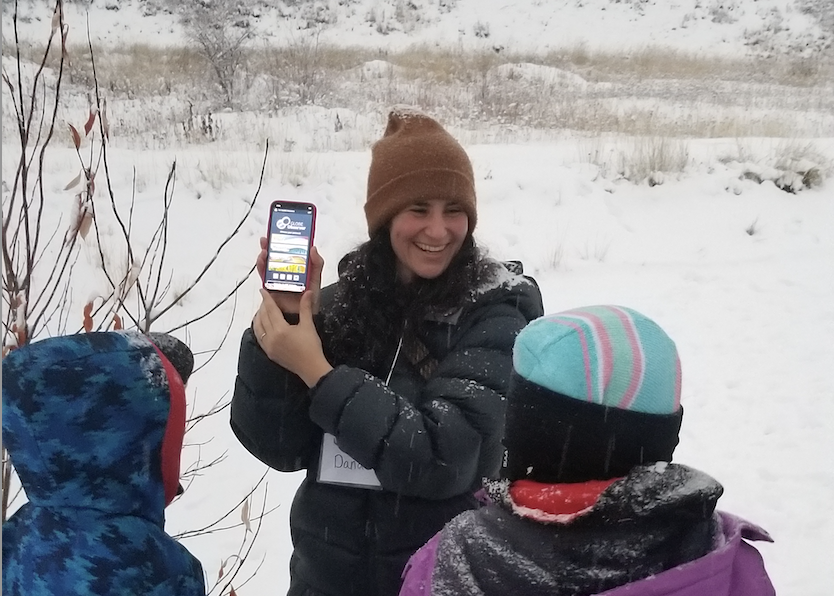
One of the most frequent questions volunteers have is "how do you use the data I collect?" This month, we invited Mohamed Abdelkader to share how he is using GLOBE Observer data of river ice based on his recent publication in the journal Remote Sensing.
The Cold Reality of River Ice Monitoring
In May 2013, the town of Galena, Alaska, faced a devastating natural disaster. A stubborn ice jam on the Yukon River, triggered by a sharp bend about 18 miles upstream, caused floodwaters to surge, inundating the town overnight. This event vividly illustrates the significant risks posed by river ice, which can lead to floods triggered by ice jams. Such ice-induced hazards are a stark reality in cold regions, underscoring the critical need for effective monitoring of ice conditions. More on this event.
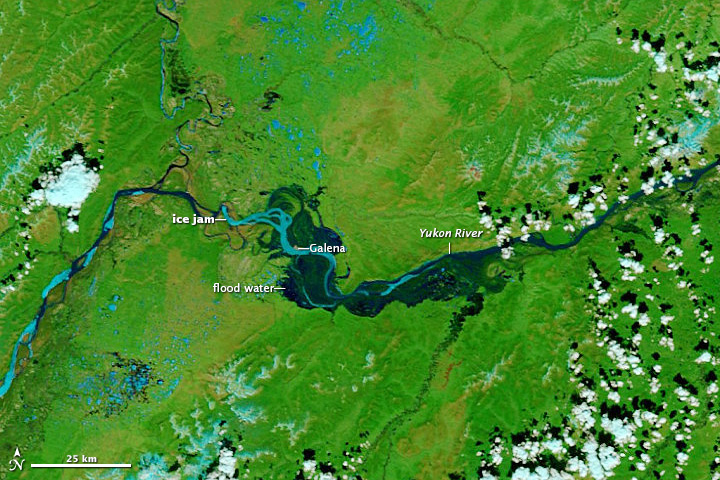 This satellite image combines visible and infrared light to show flooding on the Yukon River during the May 2013 flood event. Water is dark blue, and icy water and clouds are light blue. Image courtesy NASA’s Earth Observatory.
This satellite image combines visible and infrared light to show flooding on the Yukon River during the May 2013 flood event. Water is dark blue, and icy water and clouds are light blue. Image courtesy NASA’s Earth Observatory.
Alaska's vast and remote landscapes present unique challenges for monitoring. The dynamics of river ice—its freeze and thaw cycles—are particularly significant due to their impact on local ecosystems, transportation, and safety. In summer, these rivers serve as vital highways for boats, while in winter, they transform into frozen roads. However, the unpredictable periods of freezing and thawing render these icy routes hazardous, affecting the daily lives of local communities and their connectivity.

The view from above highlights the isolation of Alaska’s frozen rivers. Photo courtesy Mohamed Abdelkader.
Consistent and reliable observational data is hard to obtain due to geographical inaccessibility and logistical constraints. This scarcity of data exacerbates the problem in northern regions like Alaska, where there is a pressing need to build predictive models that can anticipate and mitigate the impacts of such dynamic and potentially hazardous conditions.
The Power of Integrating Citizen Science with Remote Sensing
Traditionally, scientists have relied on satellite data to monitor river ice dynamics. While remote sensing provides valuable insights, it has limitations. Satellites may not image an area frequently enough to capture rapidly changing ice conditions. Those satellites that do fly over frequently are low resolution, which means they don’t capture details. Cloud cover or darkness in the winter limit the view of the ground. Here, citizen science emerges as a vital complement. Volunteers, equipped with smartphones and simple protocols, provide essential ground-truth data that enhance the accuracy and timeliness of satellite observations.
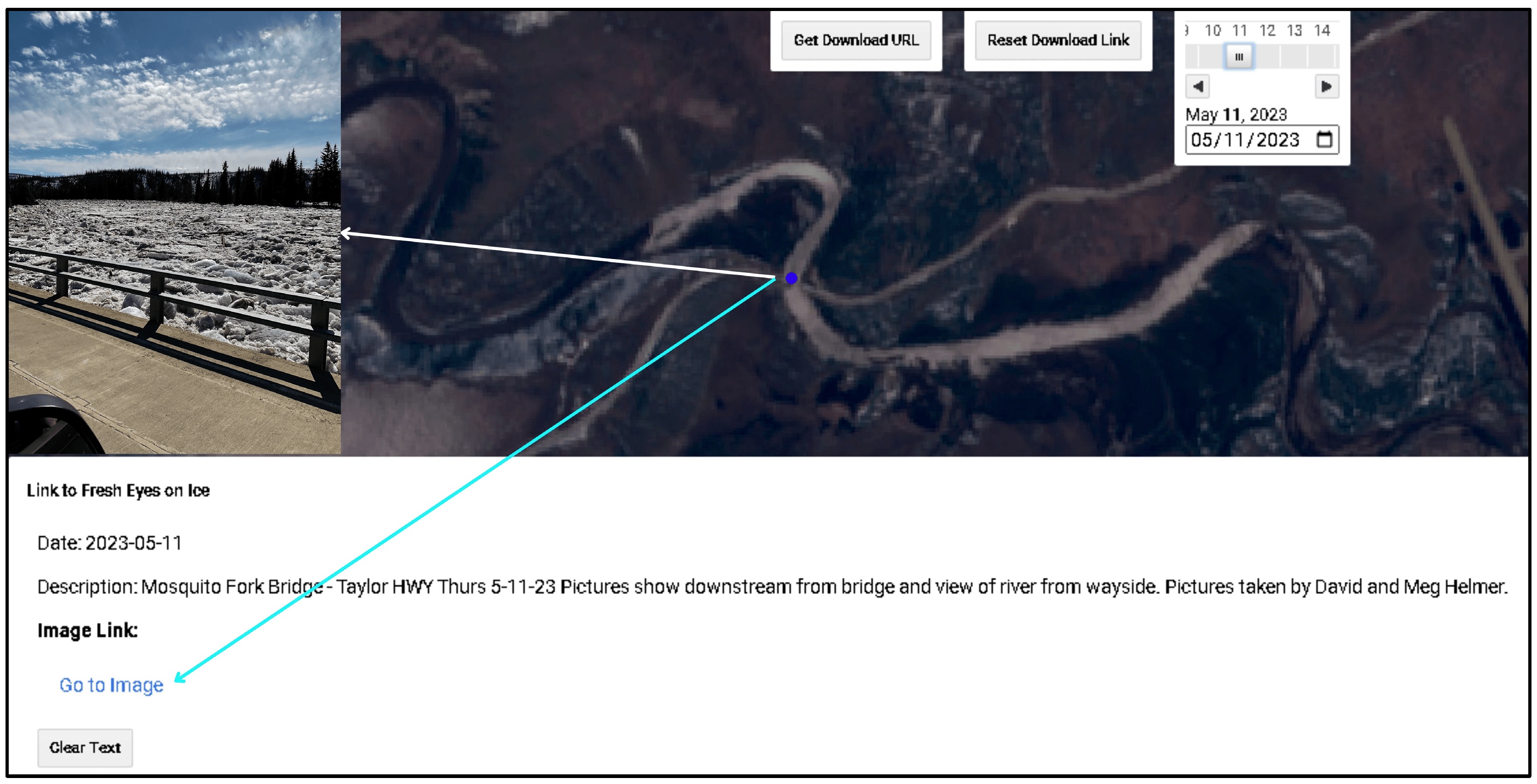
Both the Sentinel-2 satellite (right) and a volunteer observer (left) recorded an ice jam on the Forty Mile River near Chicken, Alaska on 11 May 2023, demonstrating how volunteer observations complement satellite data. Figure from Remote Sensing, volume 16 issue 8.
GLOBE Observer's Role in Alaska's Ice Monitoring
In Alaska, volunteers under programs like Fresh Eyes on Ice and The GLOBE Program collect critical data that feeds into larger research frameworks. As part of the Fresh Eyes on Ice project, volunteers in Arctic communities report on rivers using social media and apps like GLOBE Observer, the app of The GLOBE Program. Using the Land Cover tool in the GLOBE Observer app, volunteers photograph ice conditions and provide notes about the state of the river. This citizen science data helps verify remote sensing products and fills in observational gaps, particularly during crucial periods like the ice breakup season, when rapid changes occur.
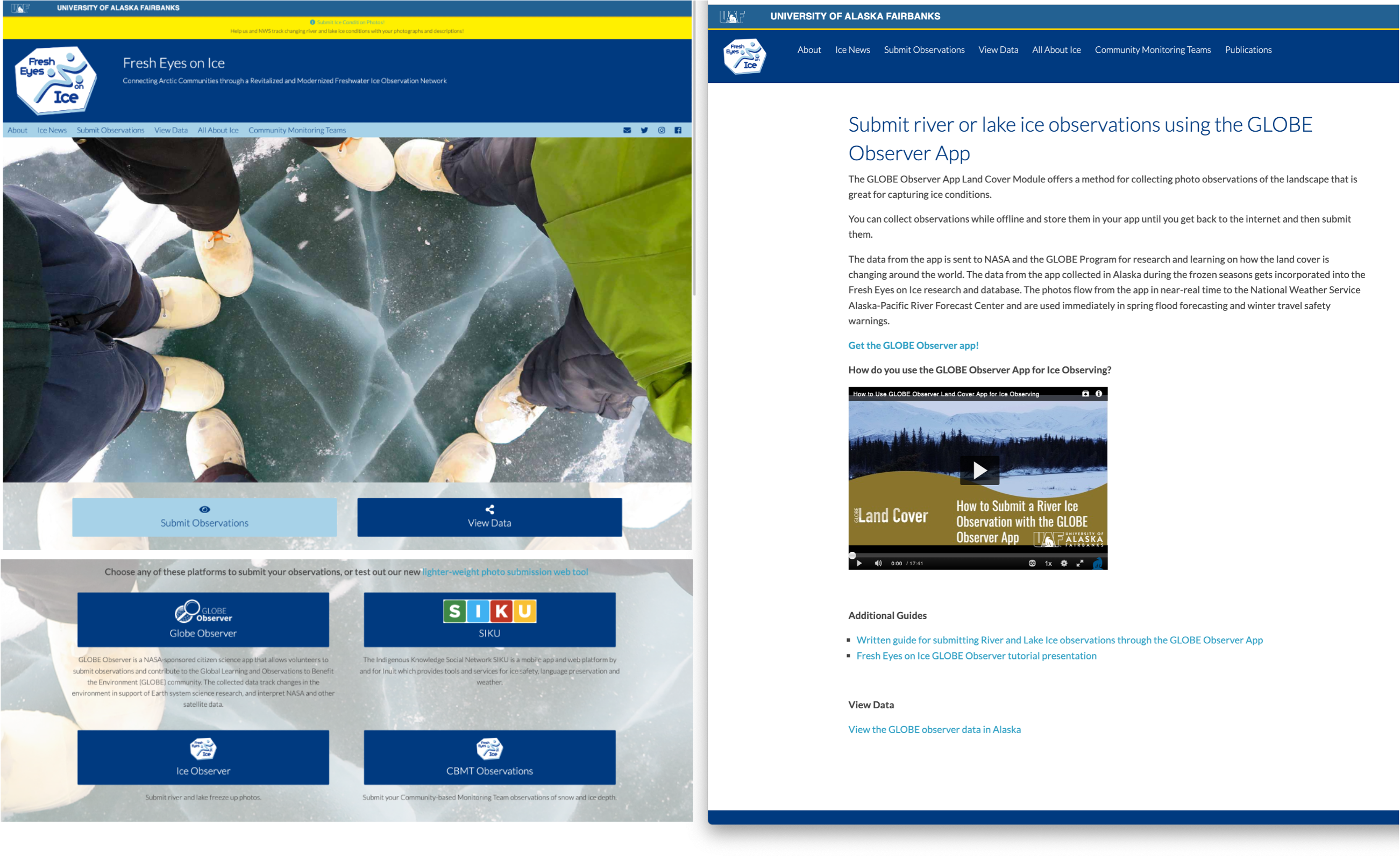
Fresh Eyes on River Ice involves volunteers in documenting river conditions across the Arctic using various tools, including GLOBE Observer.
A Case Study: Monitoring Ice Dynamics Using Citizen Science
Our recent study has harnessed data from The GLOBE Program and Fresh Eyes on Ice project alongside satellite observations, all integrated within the Google Earth Engine platform. This approach has improved our ability to monitor the changes in river ice over time and across different locations. By combining multi-satellite imagery and ground-level observations, we can observe and analyze ice conditions with unprecedented detail and accuracy.
Looking forward, we aim to refine these methodologies, potentially incorporating more advanced machine learning techniques to predict ice formation and breakup dates, thus improving the safety and well-being of Alaska's residents.

Left, GLOBE Observer land cover observations in Alaska are primarily along rivers where people are using the app to document ice conditions. On the right is an observation of the Yukon River submitted through the GLOBE Observer app representative of the image-based data integrated with satellite data in the research.
Impact on the Community 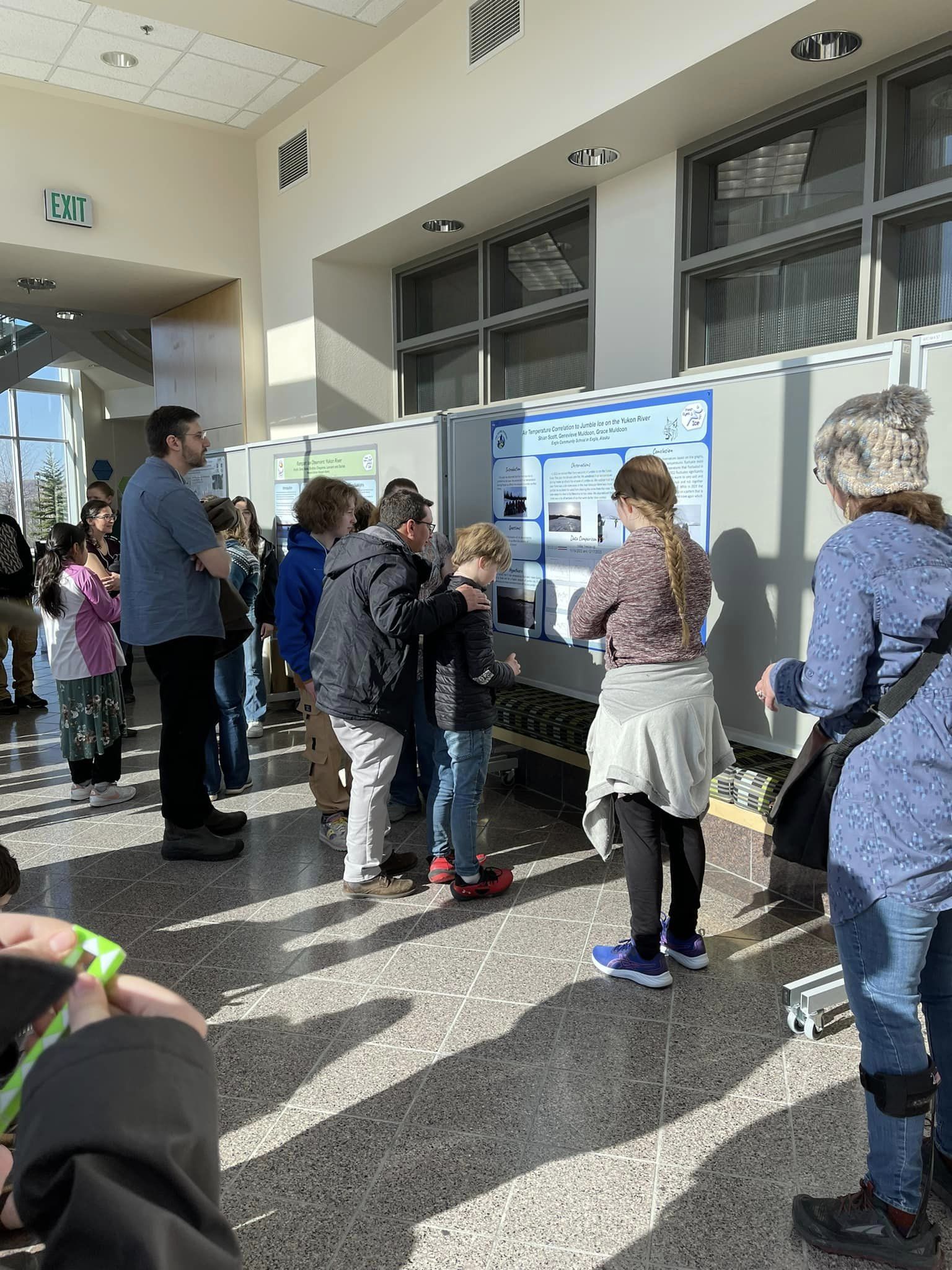
This integrative method not only improves our understanding of river ice dynamics but also actively involves local communities in scientific research, boosting their awareness and preparedness for ice-related hazards. An educational extension of these efforts was vividly demonstrated at the third annual Fresh Ice on Ice research symposium in Fairbanks. During this event, students, teachers, and scientists, including myself, gathered to share insights and data from ice monitoring activities.
Right: Students and scientists interact at the third annual Fresh Eyes on Ice research symposium. Photo courtesy Mohamed Abdelkader.
The symposium facilitated a unique exchange of ideas through activities like the "Ask a Scientist Anything" session, where I had the privilege of engaging directly with students eager to learn about the practical impacts of our work on community safety and environmental monitoring. For instance, one student asked why ice floats on water despite its weight, leading to a discussion on the properties of ice and water density—a fundamental aspect of understanding ice formation and behavior. Questions about the impacts of climate change on river ice in Alaska allowed us to explore how our data helps predict changes in ice patterns and potential risks. Others inquired about the onset of ice breakup and whether the ice thickness data they collected was used in our research. These conversations provided an excellent opportunity to demonstrate how volunteer-collected data are vital for improving the accuracy of our predictive models, emphasizing the direct contribution of community efforts to scientific advancements and local safety measures.
Your Role in Shaping Our Understanding River Ice Dynamics
We are enthusiastic about continuing this vital educational collaboration, enhancing both scientific and community resilience against climate-induced challenges.
Every observation you contribute as a GLOBE volunteer helps to enhance our understanding of river ice dynamics in cold regions. By participating in projects like GLOBE Observer, you provide essential data that supports not only scientific research but also operations in hydrology and community safety in these challenging environments. So, grab your phone, step into the cold, and help us map the changing ice conditions of our world, one observation at a time!

In this photo, a community member learns to use GLOBE Observer to document land cover and ice as part of a workshop in Alaska. Photo courtesy GLOBE.
Further Reading and Participation
Read more about our findings and methodologies in our recent paper, "A Google Earth Engine Platform to Integrate Multi-Satellite and Citizen Science Data for the Monitoring of River Ice Dynamics". Enhance your understanding by exploring the Stevens River Ice Mapping System, which illustrates the practical application of remote sensing products and citizen science observations. Discover more about the impactful contributions of community science by visiting the Fresh Eyes on Ice project.
Continue to contribute to this critical work by participating in data collection activities through the GLOBE Observer app, supporting efforts to understand and manage river ice dynamics. The synergy between remote sensing and citizen science offers a powerful combination, enriching our research and providing comprehensive insights into environmental transformations in cold regions.
Watch the recording of the GLOBE Observer Connect conversation with Mohamed on 15 August 2024:
About the Author
Originally from North Africa, Mohamed Abdelkader was inspired to study civil engineering after observing the inconsistent infrastructure development in his community. His pursuit of solving complex environmental issues led him to specialize in water resources management. He later continued his graduate studies at Stevens Institute of Technology, advised by Professor Marouane Temimi.
Mohamed's research delves into the complexities of the water cycle, applying numerical modeling, remote sensing techniques, and machine learning to understand and predict extreme environmental events like floods, droughts, and wildfires. His PhD work at Stevens’ i-SMART Lab focuses on integrating multi-source data such as satellite imagery and citizen science contributions to enhance the monitoring and prediction of hydrological processes, with a particular emphasis on river ice dynamics in cold regions.
Passionate about engaging the public in scientific research and education through innovative technologies, Mohamed is committed to making scientific research accessible and impactful.
Read more about Mohamed and his work here.





